RARE! WWII 1945 Original World War II “Headquarters of the Commander in Chief - U.S. Pacific Fleet” CONFIDENTIAL Operation Iceberg Okinawa Gunto Invasion Bulletin (Japanese Airfields)
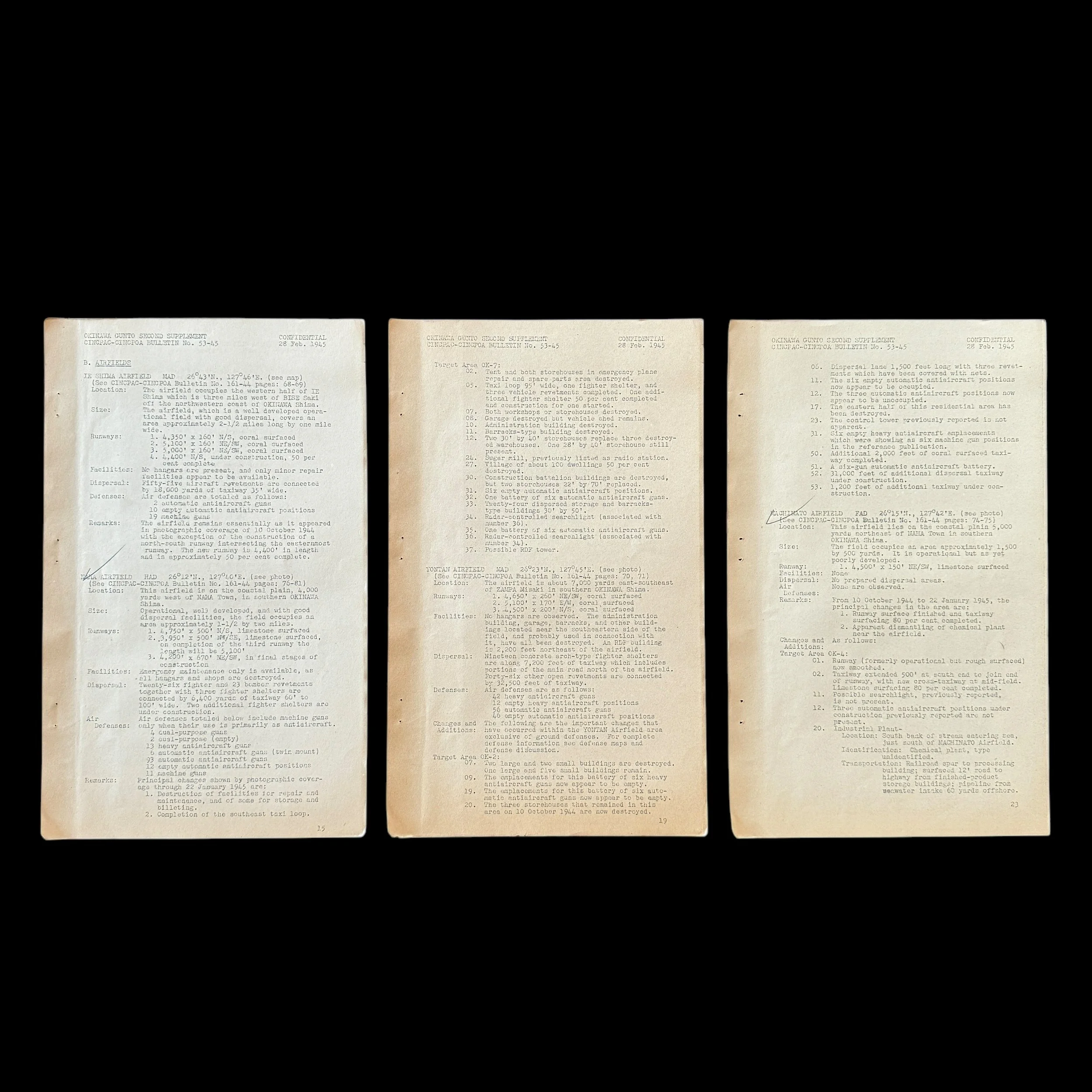

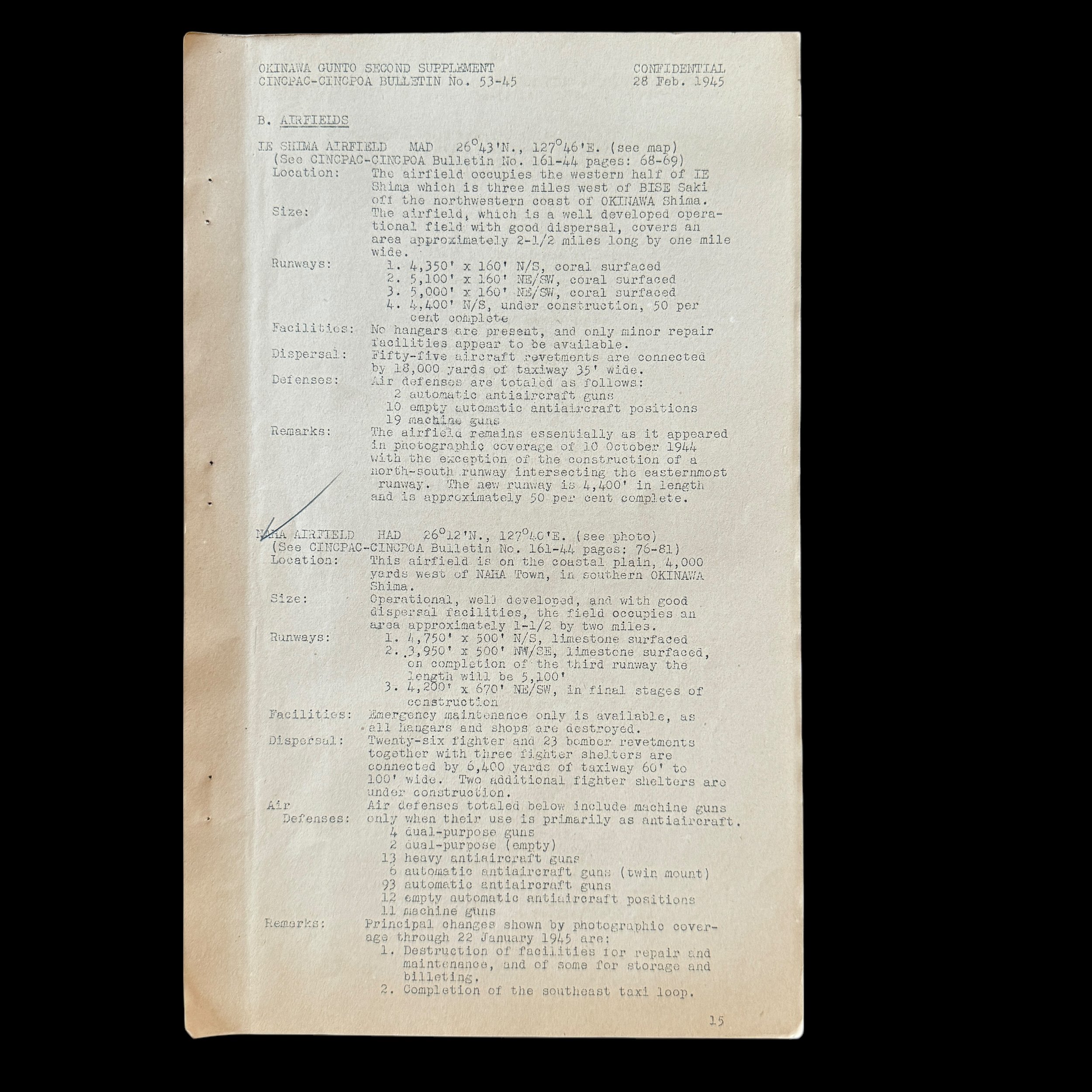
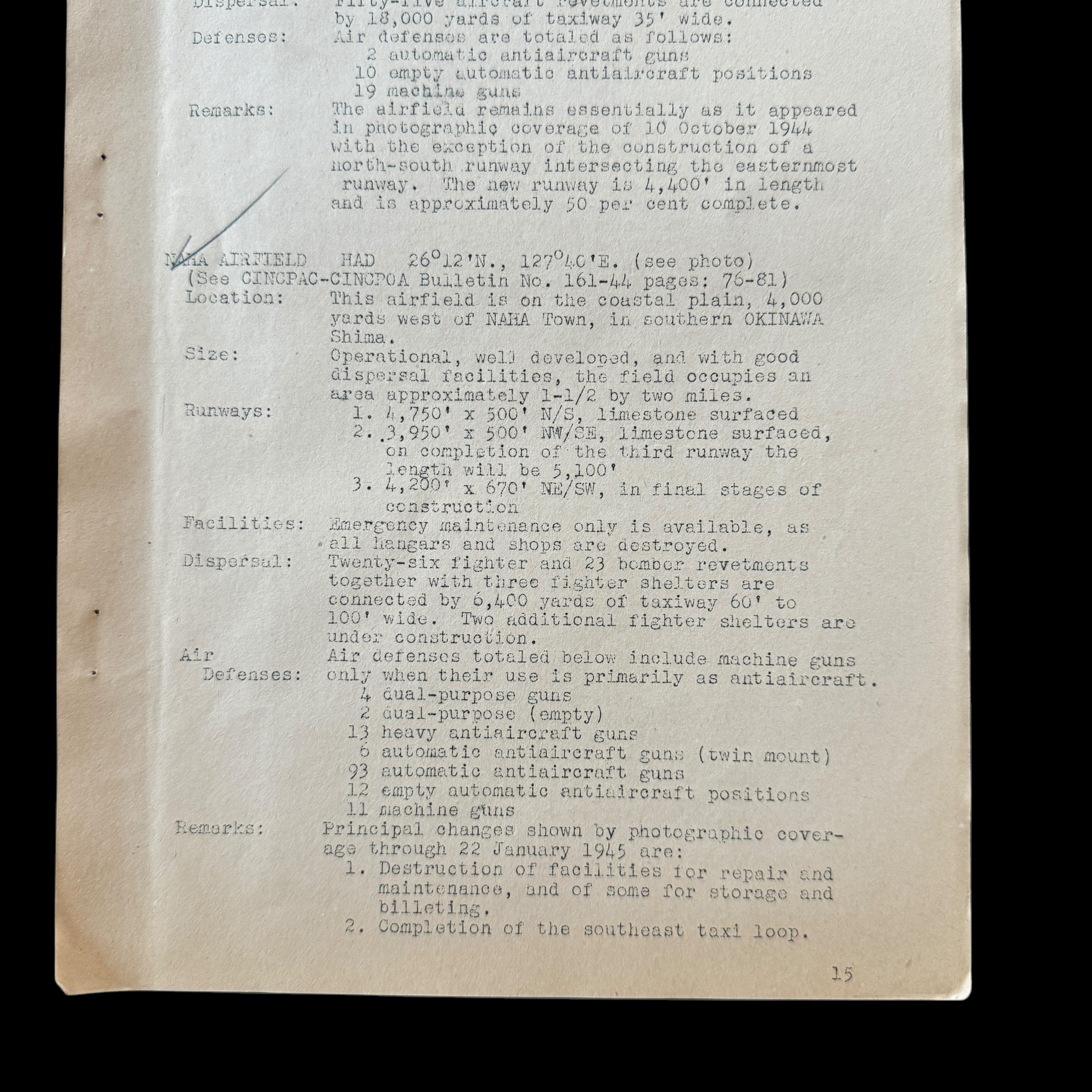
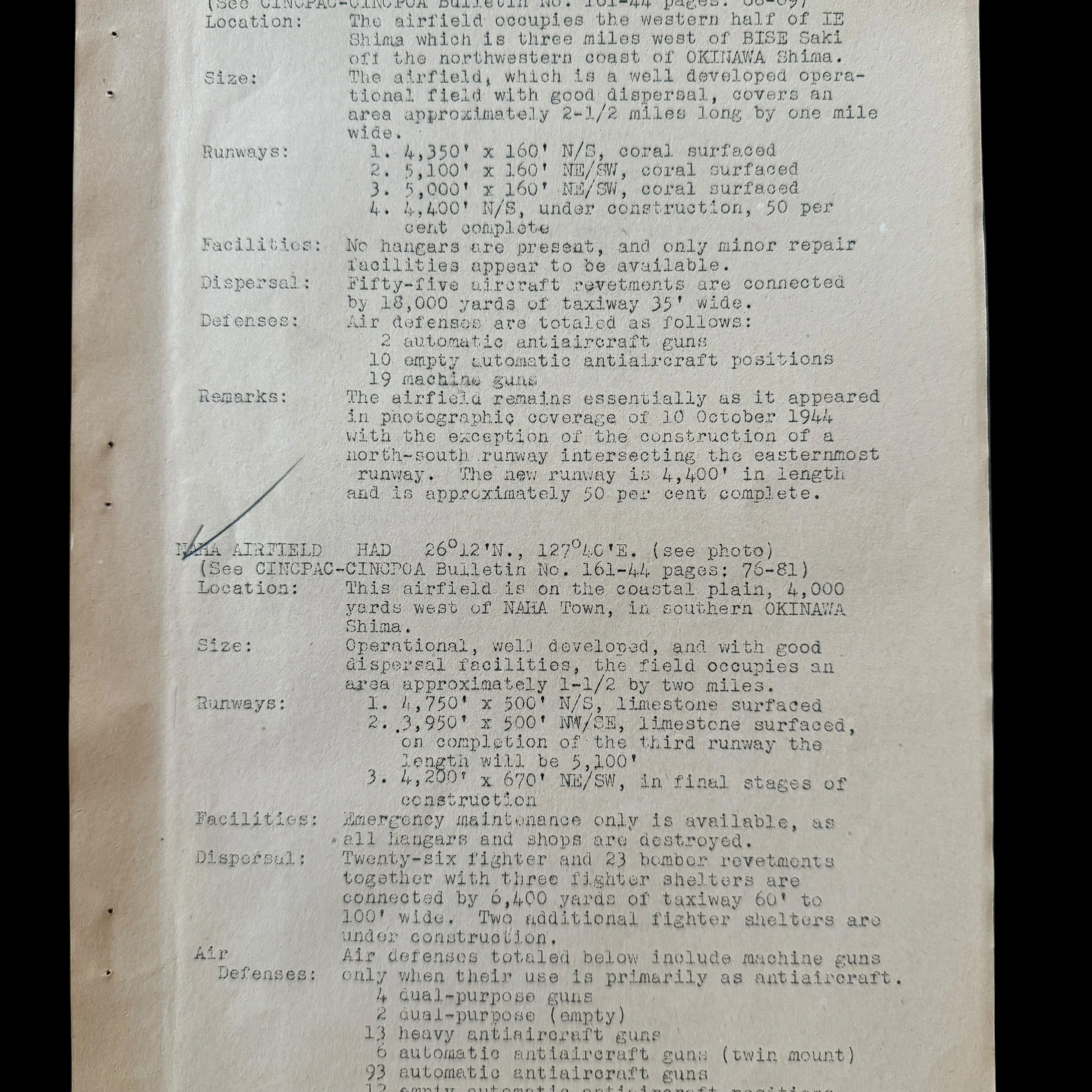

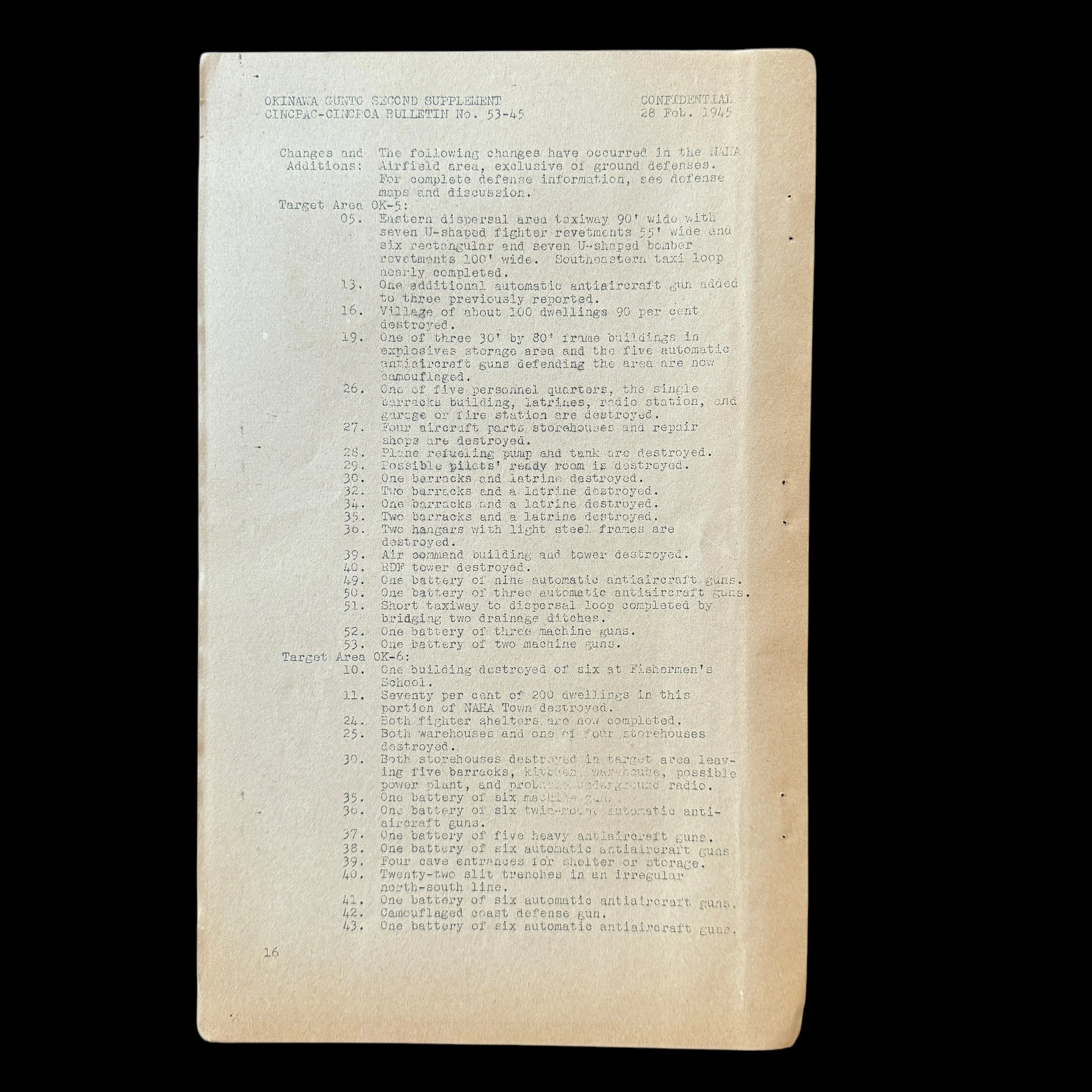
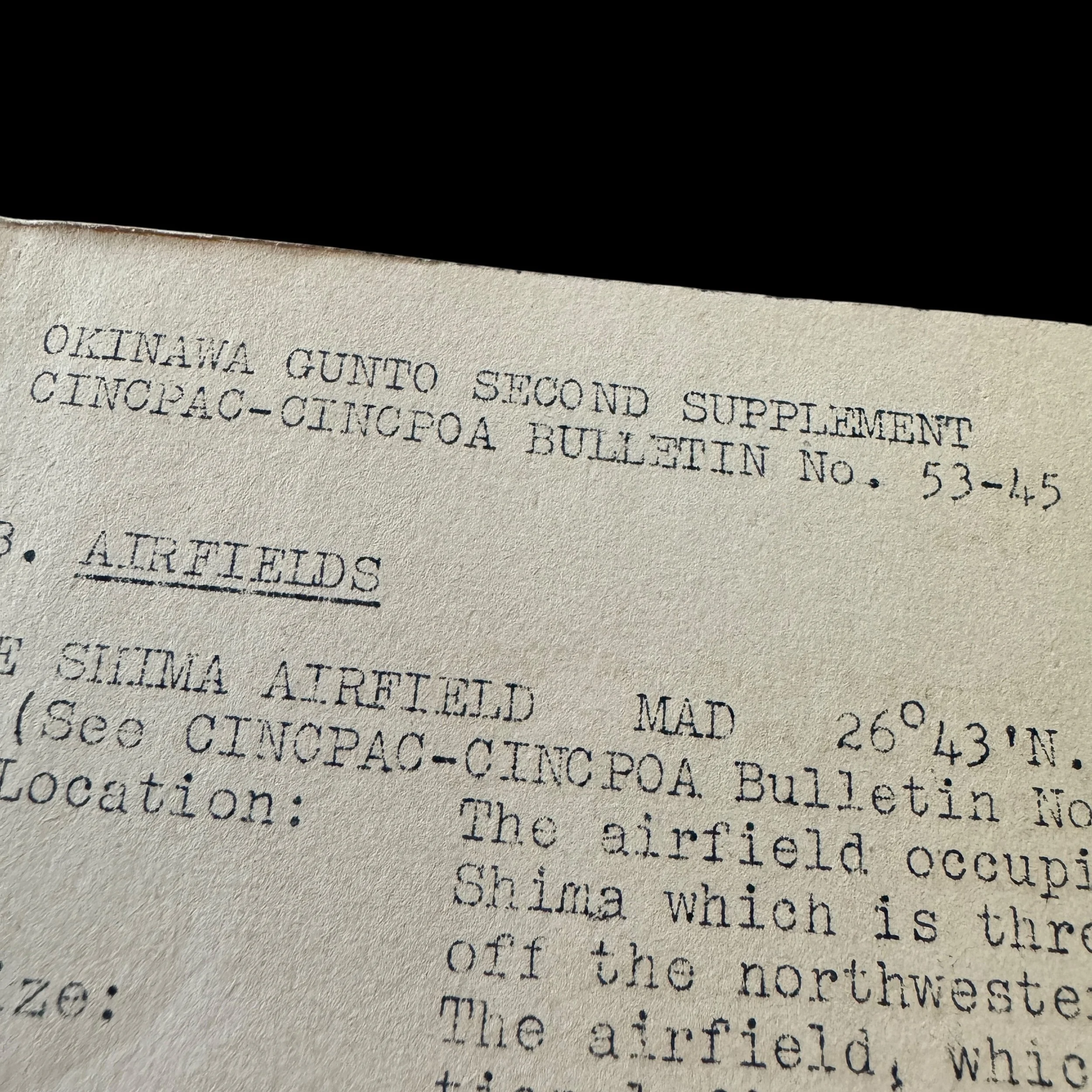



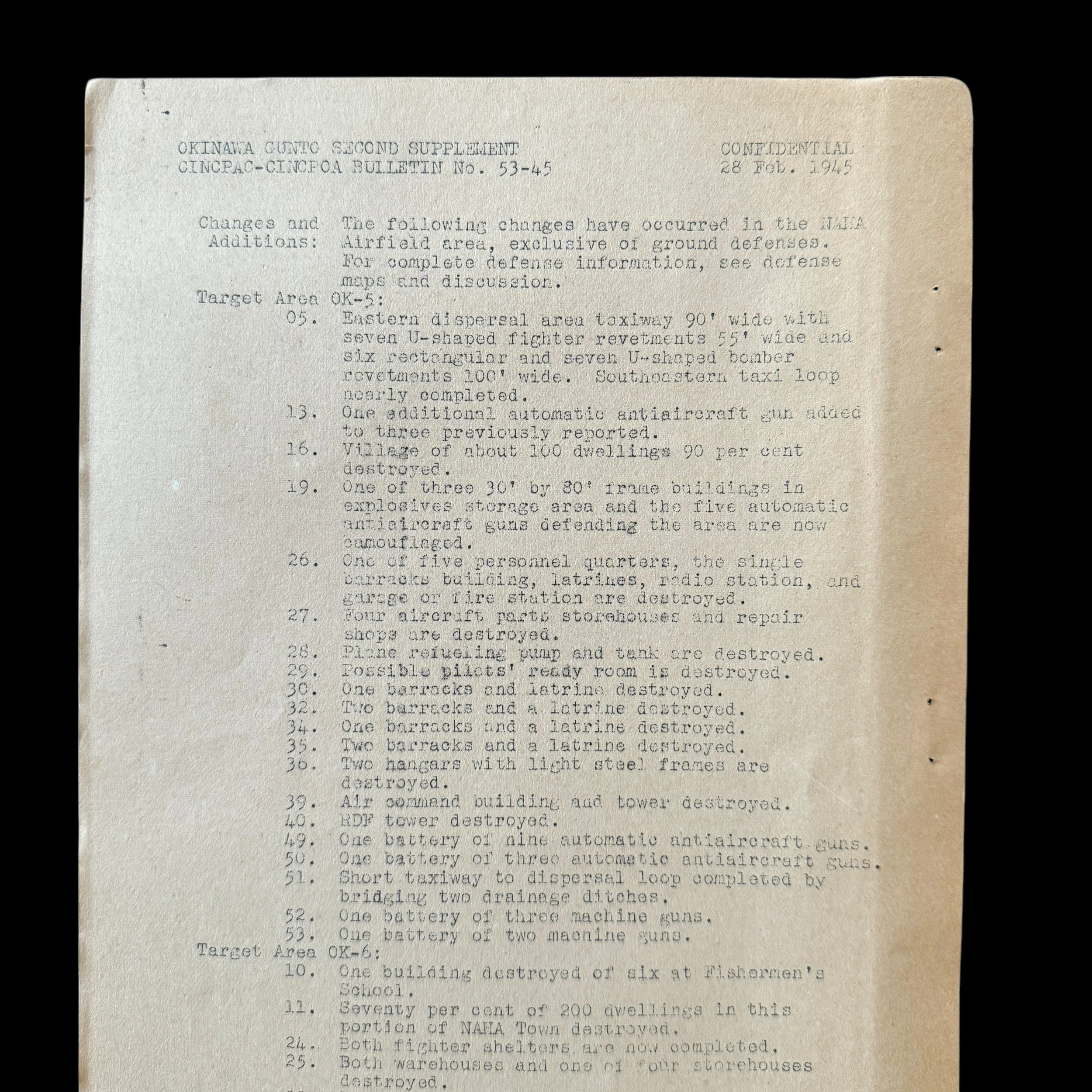
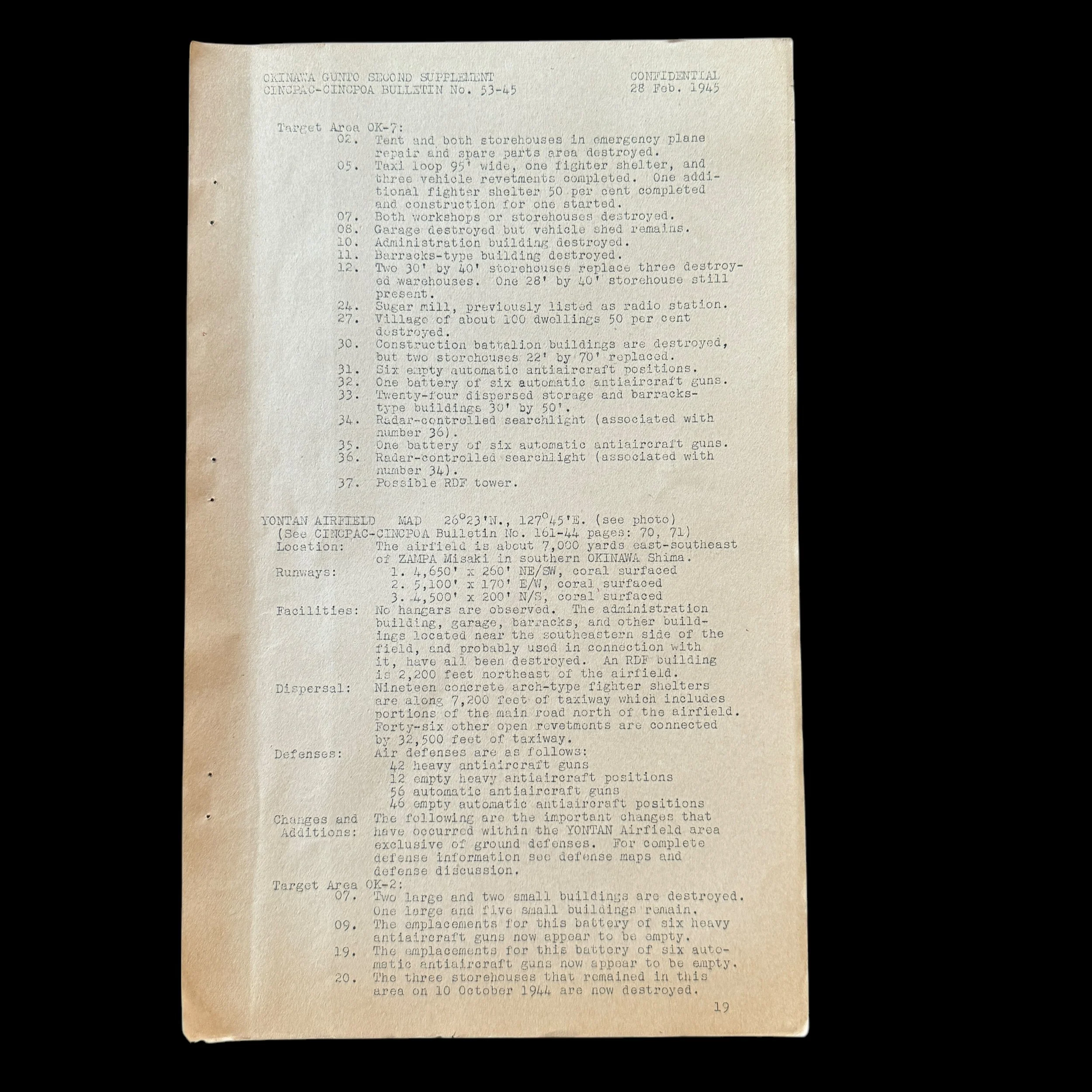

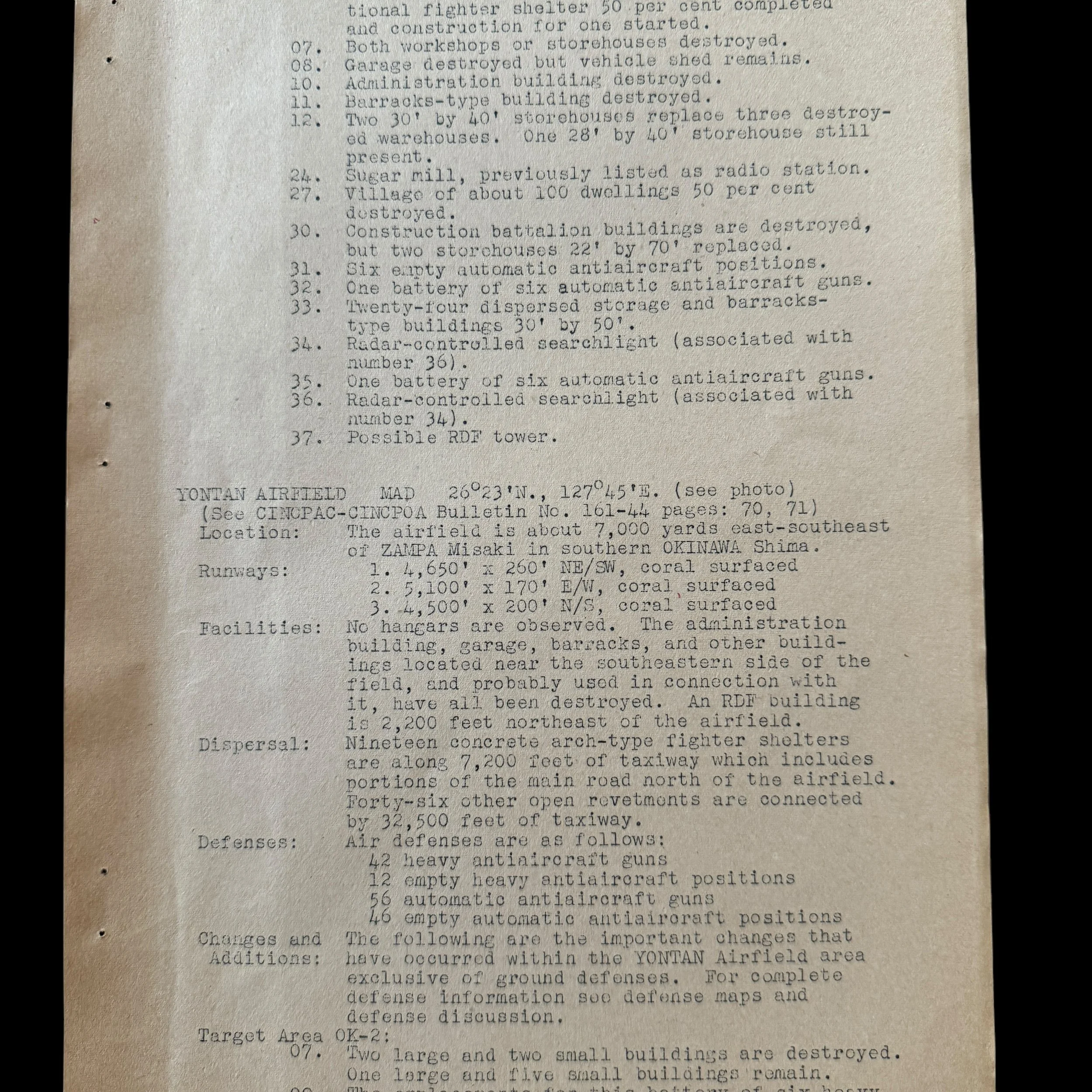

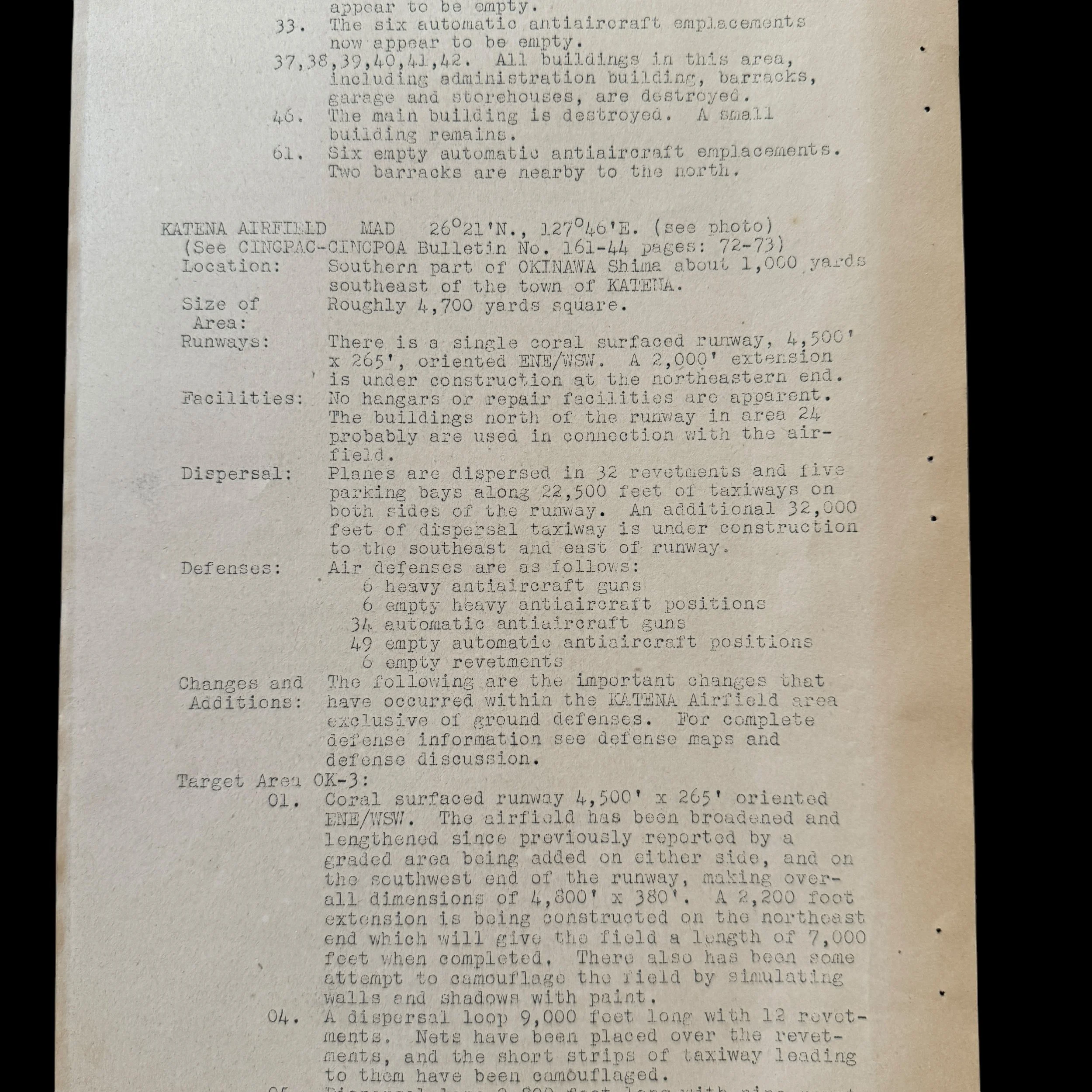
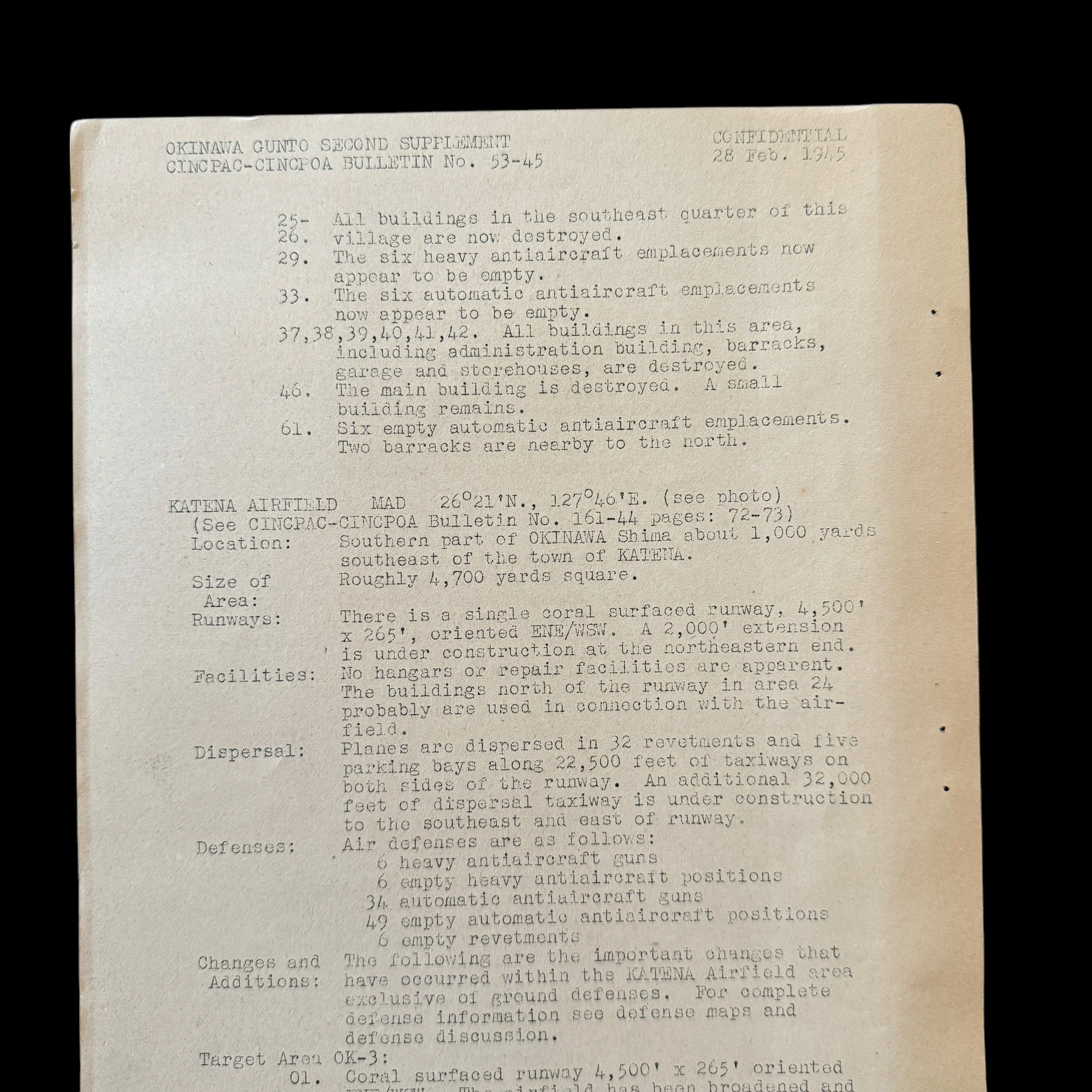

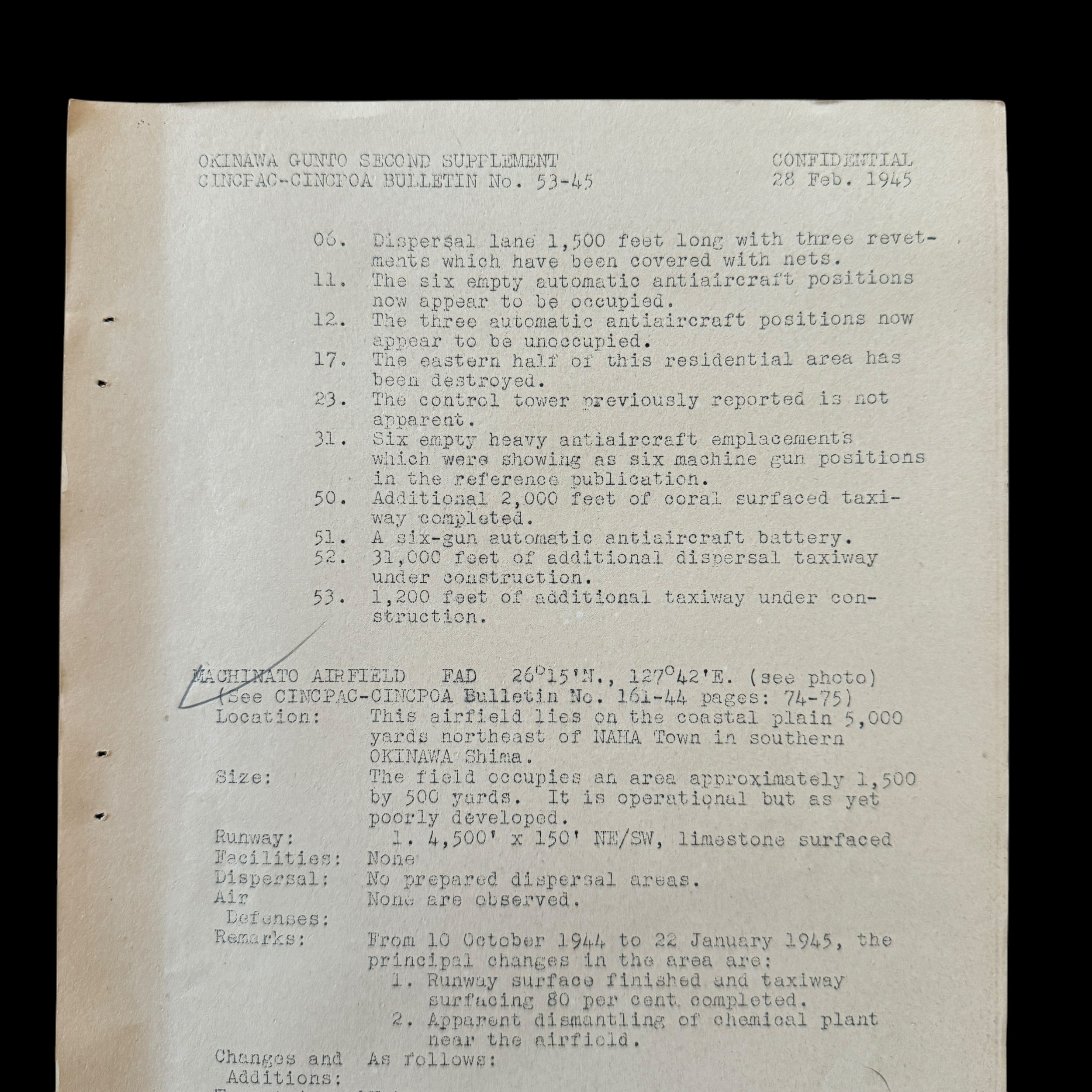



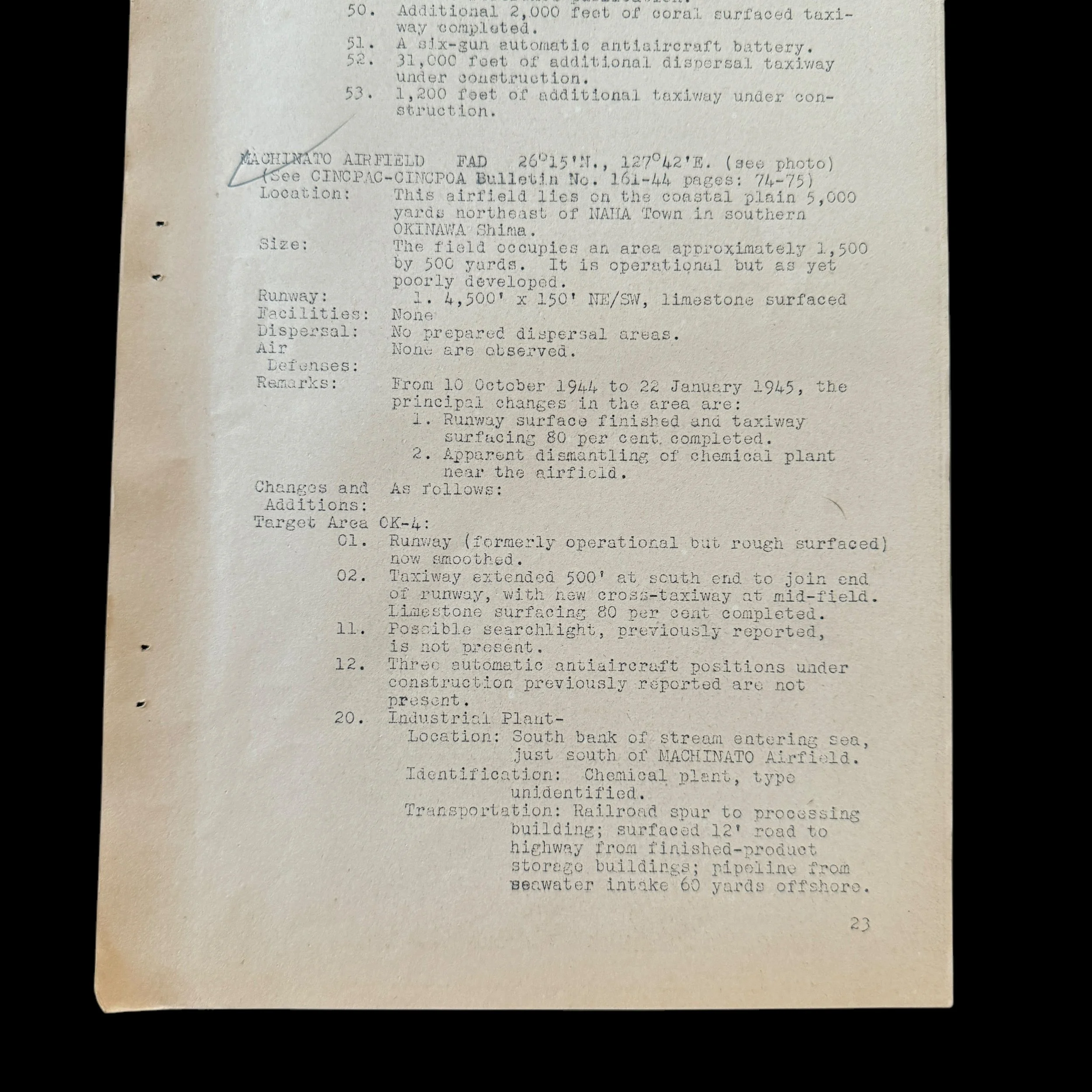
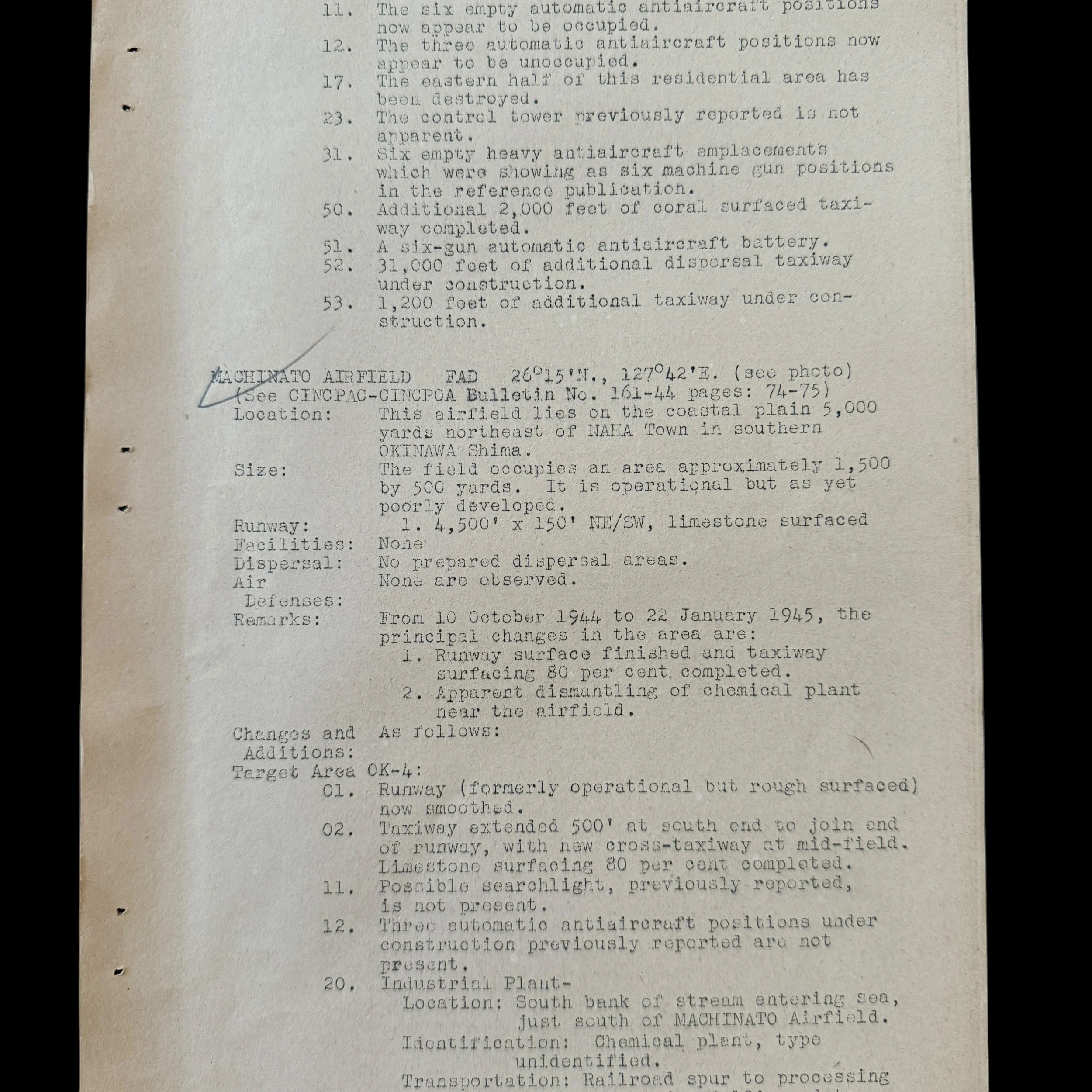


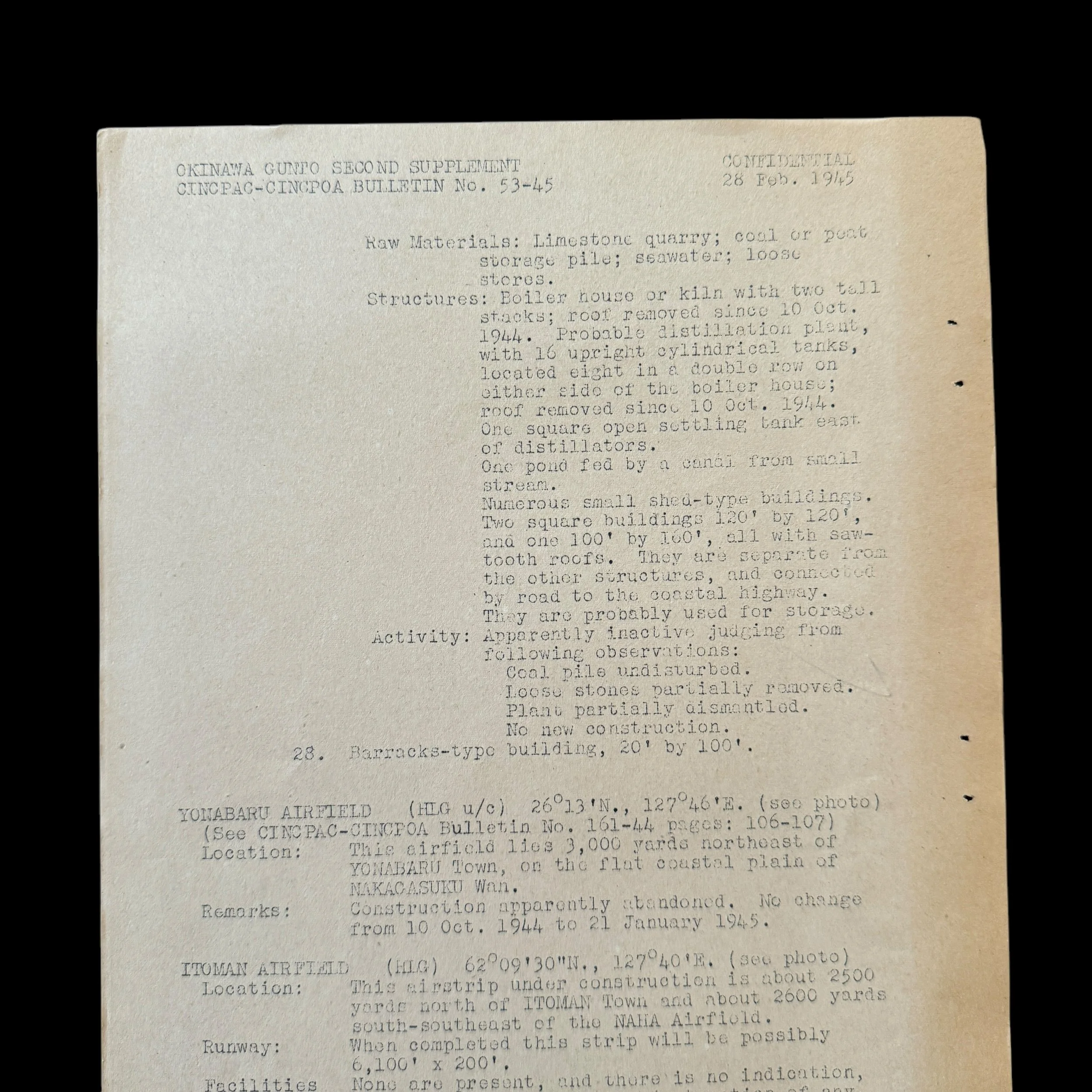
RARE! WWII 1945 Original World War II “Headquarters of the Commander in Chief - U.S. Pacific Fleet” CONFIDENTIAL Operation Iceberg Okinawa Gunto Invasion Bulletin (Japanese Airfields)
Comes with hand-signed C.O.A. and a full historical write-up
Type: Original World War II “Headquarters of the Commander in Chief - U.S. Pacific Fleet” CONFIDENTIAL Operation Iceberg Okinawa Gunto Invasion Bulletin
Subject: Japanese Airfields (location, size, runway, facilities, air defenses, target areas)
Campaign: Pacific Theater
Dated: Feb. 1945
Pages: 3 (double-sided) = 6 total pages
This rare, museum-grade World War II artifact is an original"Headquarters of the Commander in Chief - U.S. Pacific Fleet" CONFIDENTIAL Operation Iceberg Okinawa Gunto Invasion Bulletin.Produced in extremely limited numbers—fewer than 500 copies produced in 1945—these highly classified bulletins were reserved exclusively for the highest-ranking generals, officers, and intelligence officials directly involved in planning and executing the Okinawa campaign in April 1945.
Operation Iceberg, the largest amphibious assault in the Pacific Theater, required an unprecedented level of preparation and intelligence gathering. This invasion bulletin exemplifies the meticulous planning that defined the campaign, containing detailed intelligence on Japanese defensive positions and the expected strategy for Okinawa and nearby Ie Shima.
The bulletin underscores the gravity of the operation, as Okinawa was strategically critical for its proximity to the Japanese mainland. This document served as a cornerstone for the Allied effort, guiding military leaders in orchestrating the assault, which would become one of the bloodiest and most consequential battles of World War II.
Today, this artifact stands as a testament to the complexity and scale of wartime planning, offering a rare glimpse into the intelligence and strategy that shaped one of the most pivotal moments of the Pacific campaign. Its historical significance and rarity make it a treasured piece of World War II history, capturing the monumental effort behind the Allied push toward victory.
The Battle of Okinawa and Japanese Airfields: A Critical Component of Defense
The Battle of Okinawa (April 1 – June 22, 1945) was the largest amphibious assault in the Pacific Theater during World War II and a crucial campaign in the Allied strategy to invade the Japanese mainland. While much of the battle focused on ground combat, the Japanese airfields on Okinawa and the surrounding islands played a pivotal role in the campaign’s broader operational scope. These airfields served as critical infrastructure for Japanese air operations, enabling kamikaze attacks, logistical support, and defensive measures against the advancing Allied forces. This essay explores the location, size, runways, facilities, air defenses, and target areas of the Japanese airfields, illustrating their importance in the battle and their strategic significance.
Locations of Japanese Airfields on Okinawa
By 1945, several airfields had been constructed on Okinawa and its nearby islands, reflecting the island's strategic importance. The Japanese utilized both newly constructed and existing airfields, often reinforcing them with additional defenses and facilities to serve as hubs for defensive air operations.
Major Airfields on Okinawa:
Yontan Airfield:
Located on the western side of Okinawa, near the coast.
One of the largest airfields on the island, serving as a critical base for Japanese aircraft operations.
Captured early during the Allied invasion and later used by U.S. forces.
Kadena Airfield:
Situated in the central part of Okinawa, it became a vital target for the Allies.
Initially used by the Japanese for both defensive air operations and kamikaze missions.
After its capture, Kadena became a major operational base for Allied air units.
Naha Airfield:
Located near the city of Naha in southern Okinawa.
Primarily served as a defensive air base and logistics hub.
Targeted heavily by Allied air strikes to neutralize its operational capacity.
Ie Shima Airfield:
Found on the nearby island of Ie Shima (Ie Island), just northwest of Okinawa.
This airfield was strategically important due to its proximity to the main island.
Used for kamikaze attacks and logistical support, making it a significant target for Allied forces.
Yonabaru Airfield:
Positioned on the eastern side of Okinawa, serving as a secondary base for defensive operations.
Less prominent than other airfields but still an important asset in the overall Japanese air strategy.
Size and Runway Specifications
The size and runway infrastructure of these airfields varied depending on their intended use and location. The Japanese prioritized building runways capable of supporting both fighters and medium bombers, ensuring flexibility in air operations.
Runway Length and Material:
Most runways were constructed of compacted coral or gravel, with some paved surfaces in critical areas.
Typical runway lengths ranged from 4,000 to 6,000 feet, sufficient to accommodate Japanese aircraft such as the Mitsubishi Zero fighter and Mitsubishi G4M Betty bomber.
The airfields often included secondary or auxiliary runways to improve operational resilience.
Airfield Size:
The largest airfields, such as Yontan and Kadena, covered hundreds of acres, including runways, taxiways, and storage areas.
Smaller airfields, like those on Ie Shima, were more compact but strategically positioned for rapid deployment and kamikaze missions.
Facilities and Infrastructure
The Japanese airfields on Okinawa were equipped with basic yet functional facilities to support air operations under difficult wartime conditions.
Aircraft Hangars:
Reinforced hangars were built to shelter aircraft from air raids.
Many hangars were partially buried or camouflaged to reduce visibility from Allied reconnaissance.
Fuel and Ammunition Storage:
Underground storage facilities were constructed to protect critical supplies from bombing.
These depots often included concealed entry points and were surrounded by natural terrain features for added protection.
Maintenance Facilities:
Basic workshops were set up for repairs and servicing of aircraft.
Due to supply shortages, maintenance often involved salvaging parts from damaged aircraft.
Barracks and Command Centers:
Housing and command facilities for air crews and ground personnel were situated near the airfields, often in fortified or camouflaged structures.
These command centers were linked to regional air defense networks to coordinate operations.
Air Defenses
To defend their airfields from Allied air raids, the Japanese implemented a combination of active and passive defensive measures. These defenses were designed to protect critical infrastructure and disrupt incoming attacks.
Anti-Aircraft Artillery (AAA):
Airfields were heavily protected by anti-aircraft guns, including 25mm Type 96 cannons and larger 75mm guns.
These batteries were strategically placed around runways, fuel depots, and other critical areas to maximize coverage.
Camouflage and Concealment:
Aircraft and facilities were camouflaged with netting and natural materials to blend with the surrounding terrain.
Dummy aircraft and false installations were used to divert Allied attacks away from operational assets.
Radar Installations:
Some airfields, particularly larger ones like Yontan and Kadena, were equipped with radar stations to provide early warning of incoming air raids.
Kamikaze Support:
Many airfields served as launch points for kamikaze missions, with dedicated areas for fueling and arming aircraft designated for these suicide attacks.
Target Areas
The Allied forces identified Japanese airfields as high-priority targets due to their role in supporting kamikaze operations and defending Okinawa. These airfields were subjected to relentless bombing and strafing missions during the battle.
Primary Target Areas:
Runways: Disabling runways was a top priority to prevent the Japanese from launching aircraft.
Fuel Depots: Destroying fuel supplies significantly hampered Japanese air operations.
Hangars and Aircraft Storage: Allied forces targeted hangars and parked aircraft to reduce the Japanese air force’s operational capacity.
Anti-Aircraft Positions: Neutralizing AAA emplacements was critical to ensuring the success of bombing missions.
Allied Bombing Campaign:
Carrier-based aircraft from the U.S. Navy and land-based bombers from the U.S. Army Air Forces conducted continuous air strikes on these airfields.
Bombing missions were often supported by reconnaissance to assess damage and prioritize targets for follow-up strikes.
Strategic Importance
The Japanese airfields on Okinawa were critical to their defensive strategy, providing launch points for kamikaze missions and supporting logistical operations. However, the overwhelming air superiority of the Allies rendered many of these airfields ineffective over time. The rapid capture of Yontan and Kadena airfields during the initial stages of the invasion allowed the Allies to establish their own air operations, further tipping the balance in their favor.